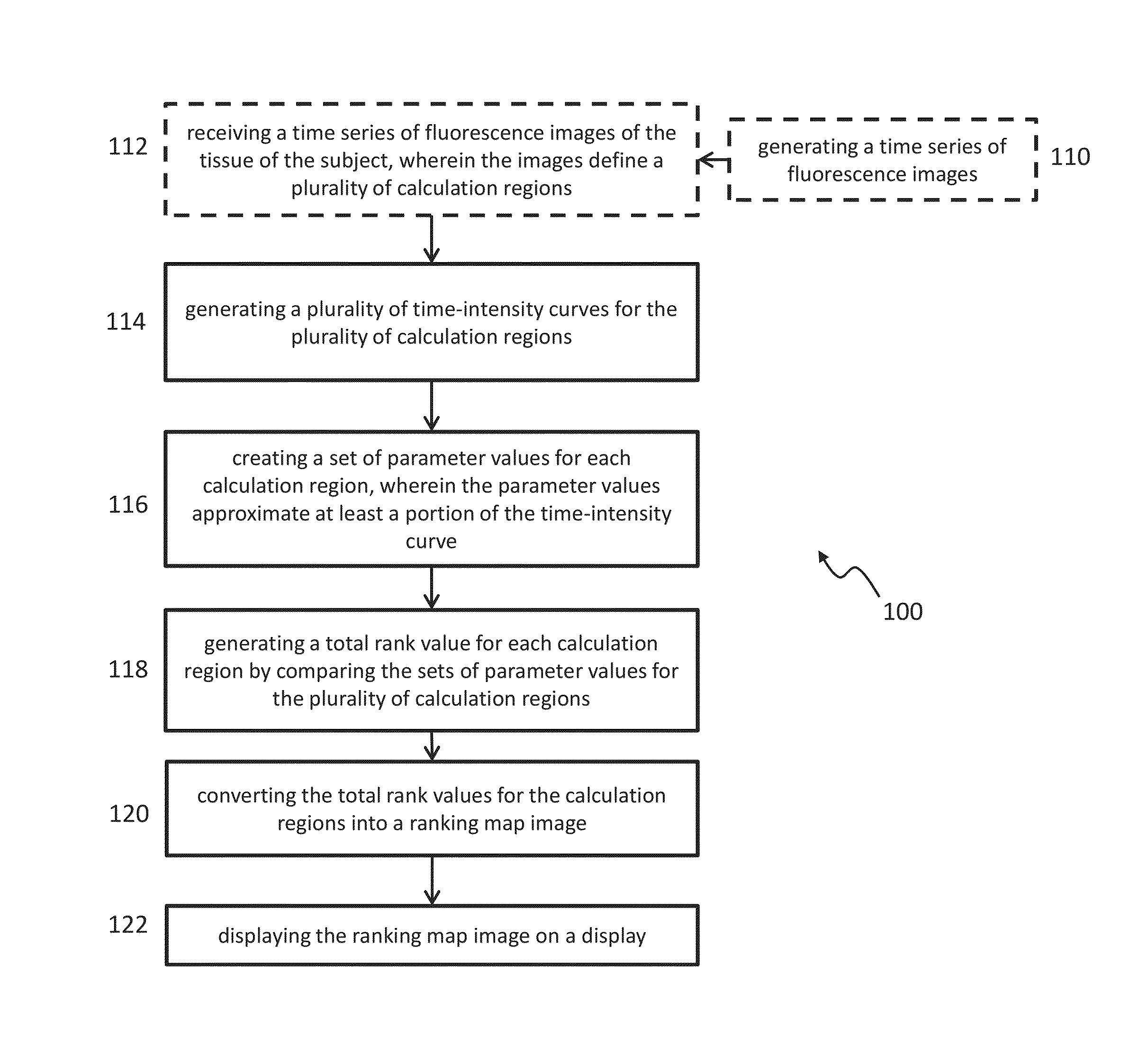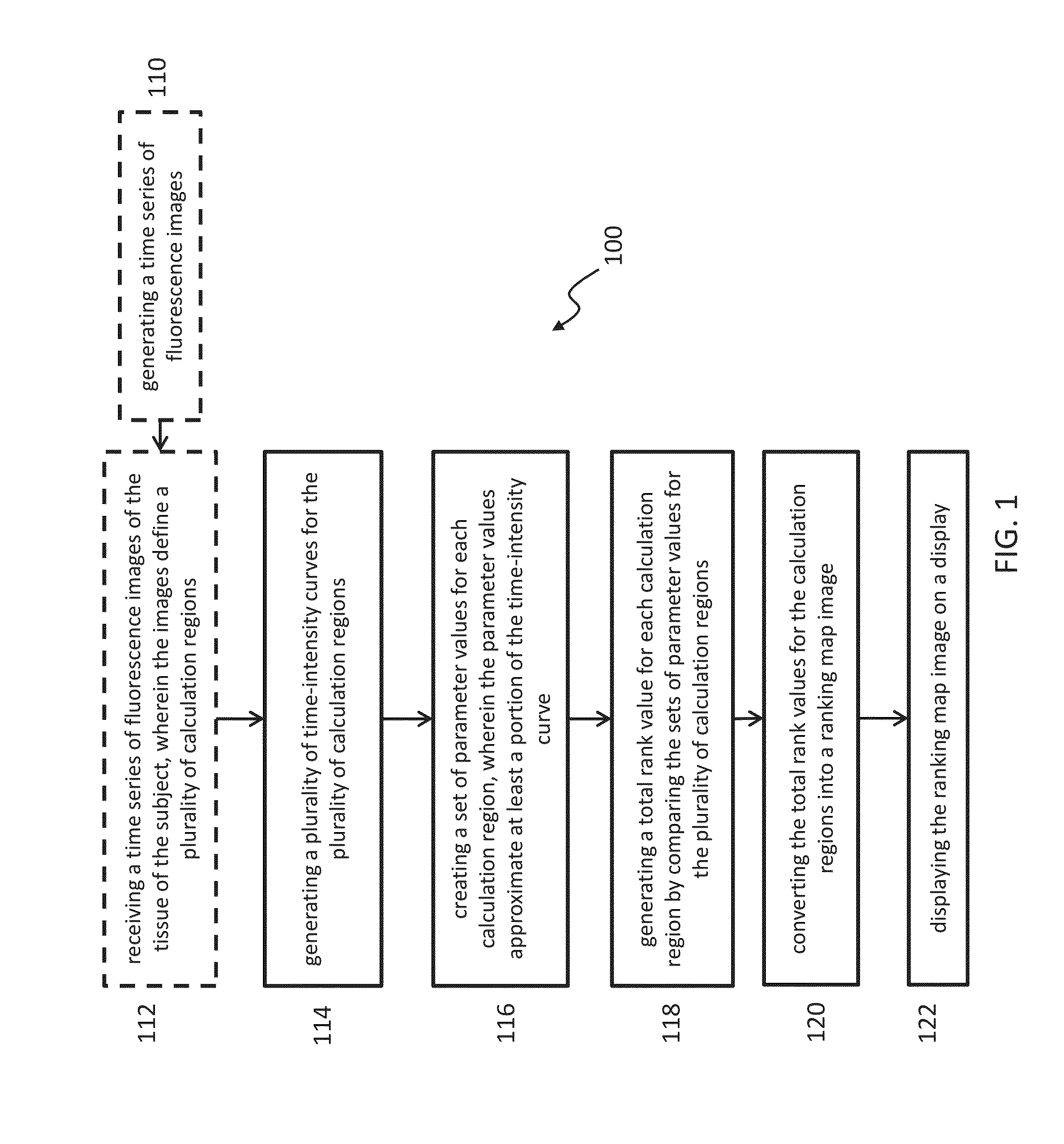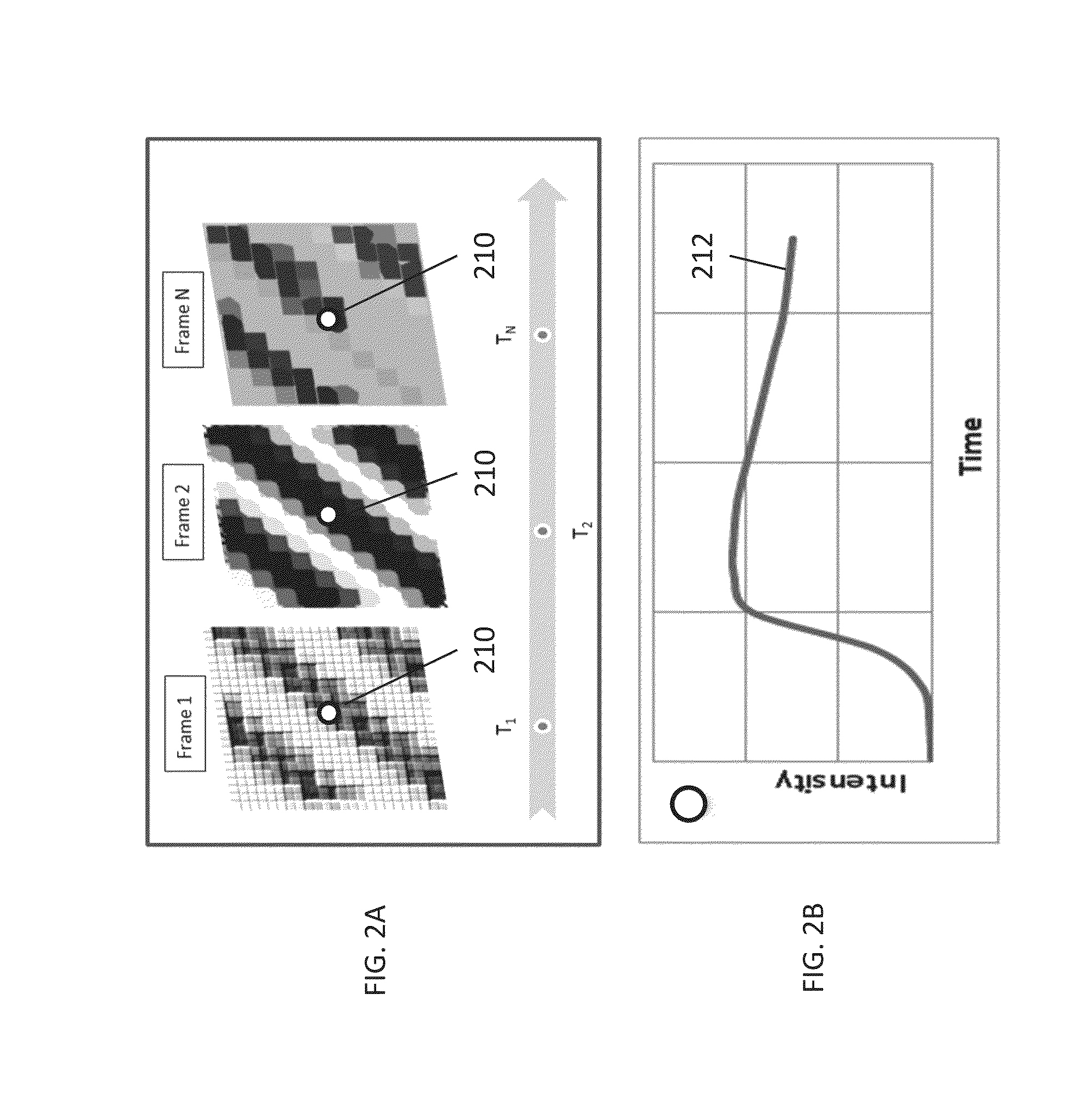Methods and systems for characterizing tissue of a subject
a tissue and subject technology, applied in the field of imaging, can solve the problems of subjective and not very precise clinical judgment, insufficient qualitative visual evaluation of such images, and high variability in blood movement through individual capillaries
- Summary
- Abstract
- Description
- Claims
- Application Information
AI Technical Summary
Benefits of technology
Problems solved by technology
Method used
Image
Examples
case 1
tic Fracture Wound
[0137]FIGS. 12A to 12H illustrate an application of the method and system of the present invention for quantitative assessment and management of wounds, such as for example, a wound caused by a traumatic fracture. The patient was a 72 year oldmale who incurred a traumatic, compound bimalleolar fracture of his left ankle that required operative repair with an open reduction / internal-fixation procedure. The surgical site has become fully disrupted, threatening the fixation plates and hence the extremity. Hyperbaric oxygen therapy (HBOT) therapy was recommended.
[0138]The color image in FIG. 12A shows a wound observed during an initial assessment of the patient with the clinician prior to any therapy applied to the wound, and FIG. 12E is a color image of the wound one month after the initial assessment following repeated episodes of treatment. The maximum perfusion maps of the wound were generated as described above, an example of which is illustrated in FIG. 12B taken...
case 2 — infected
Case 2—Infected Wound
[0142]FIGS. 13A to 13K illustrate an application of the method and system of the present invention for quantitative assessment and management of wounds, such as for example, an infected wound. The patient was a 48 year old male with an infected wound in the left leg. Open-reduction-internal-fixation reconstruction procedure was performed. The wound has been open for several months. Refractory to aggressive topical wound care and antibiotics treatments were applied, and HBOT therapy was recommended. The methods described above in connection with image acquisition, processing and generation of the wound index value apply to this case.
[0143]FIGS. 13A, 13F and 13I are color images of the wound during an initial assessment (FIG. 13A) and thereafter following treatment, which occurred at 2 weeks (no image available), 2 months (FIG. 13F), and 3 months (FIG. 13I) from the initial assessment. FIGS. 13B, 13D, 13G, and 13J are the corresponding maximum perfusion maps, and ...
case 3
ic Wound
[0145]FIGS. 14A to 14I illustrate an application of the method and system of the present invention for quantitative assessment and management of wounds, such as for example, an ischemic wound. The patient was 51 year old male with left foot ischemic wound with an amputated metatarsal with osteomyelitis and ascending fasciitis, and obliterative end arteritis. Refractory to aggressive topical care and antibiotics treatments have been applied. HBOT was recommended and started. The methods described above in connection with image acquisition, processing and generation of the wound index value apply to this case.
[0146]FIGS. 14A, 14D and 14G are color images of the wound during an initial assessment and thereafter following treatment which occurred at 5 days (FIG. 14D) and 1 month (FIG. 14G) following the initial assessment. FIGS. 14B, 14E, and 14H are the corresponding maximum perfusion maps, and FIGS. 14C, 14F, and 14I are the corresponding wound activity maps. A healthy tissue ...
PUM
 Login to View More
Login to View More Abstract
Description
Claims
Application Information
 Login to View More
Login to View More - R&D
- Intellectual Property
- Life Sciences
- Materials
- Tech Scout
- Unparalleled Data Quality
- Higher Quality Content
- 60% Fewer Hallucinations
Browse by: Latest US Patents, China's latest patents, Technical Efficacy Thesaurus, Application Domain, Technology Topic, Popular Technical Reports.
© 2025 PatSnap. All rights reserved.Legal|Privacy policy|Modern Slavery Act Transparency Statement|Sitemap|About US| Contact US: help@patsnap.com



